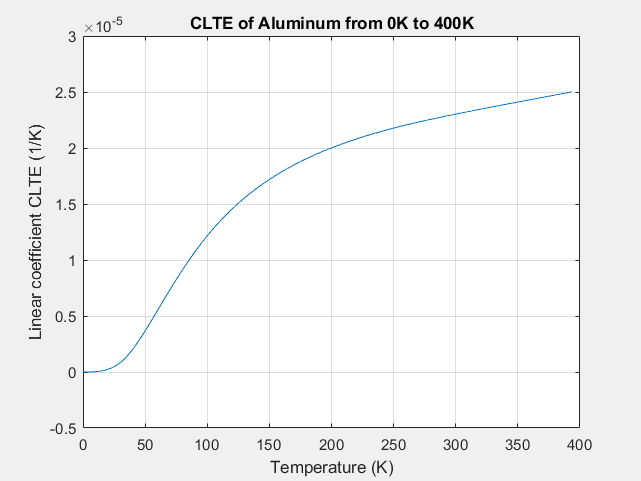Hi to all,
I try to simulate the thermal expansion as a function of the body’s temperature.
The device under test is an aluminum rod with a length of 1m and a diameter of 0.05m.
The test environment is Thermomechanical (transient, Dynamic) with boundary conditions (fixed support on one end of the rod and fixed temperature values for all faces) or (elastic support on one end of the rod with remote displacement (0) and fixed temperature values for all faces).
Reference data for the CTE of aluminum are taken from:
Absolute linear thermal‐expansion measurements on copper and aluminum from 5 to 320 K
F. R. Kroeger and C. A. Swenson, Journal of Applied Physics 48, 853 (1977)
The CTE for aluminum was set to 22.87e-6 K^-1 at a reference temperature of 293.15 K
The initial temperature was also 293.15 K, the end temperature was set to 140 K
So one can calculate a delta L to -3.5025 mm, which is in very good agreement with the simulation of -3.5055 mm (<1% error).
When using a table with a temperature dependent CTE according the citation given above, the results shows significant differences to the analytical model.
In the citation the CTE(T) was measured with dilatometry and the CTE were was described as a piecewise power series with coefficients taken from least squares approximation of the measured data.
When I import a CTE(T) table and repeat the calculation the results shows a significant difference to the calculated value (3.11 mm shrinking with the analytically equation and about 2.5 mm with the simulation).
Is there any Idea about this ?
Best Regards to all



 Would be happy to see your results as well!!
Would be happy to see your results as well!!